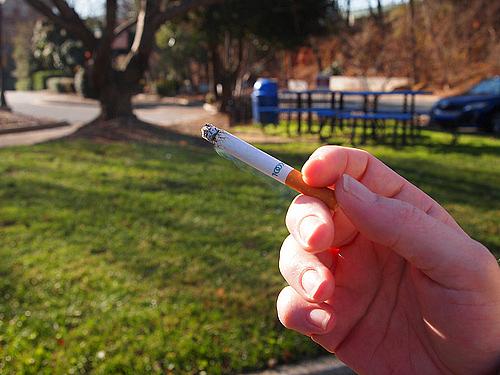Taxes, Regulations & Election Spending: Tobacco Control in the U.S.

The tobacco industry has never been shy about flexing its financial muscle to influence policy. One report released this week looks at the tobacco lobby’s efforts to derail increased cigarette taxes and another sheds some not so flattering light on state and federal efforts to control tobacco use. The reports offer several story ideas for journalists interested in investigating the latest on prevention, laws and taxes on tobacco.
The American Lung Association published State of Tobacco Control 2013, which grades states on Tobacco Prevention and Control Spending, Smoke-free Air Laws, Cigarette Taxes and Smoking Cessation Coverage. Here are some questions that might generate some story ideas:
Why are a majority of states doing poorly on two measurements? Most states failed in the Prevention and Control and Cessation categories. Scores on the Taxes were a mixed bag. Do you know what state has the highest cigarette tax in the nation? New York. And for that they got an 'A.' You might think that would boost its overall report card, but not so. New York’s grade on Prevention and Control is an 'F,' simply because it isn’t spending enough money in that arena, even with federal and state money combined. Its policies on smoking cessation also earned the state an 'F.'
Where does the money go? The report indicates that states “receive $25.7 billion from tobacco-related revenue annually, and CDC recommends states invest about $3.7 billion or 14.4 percent of this revenue on tobacco prevention and control programs each year. However, states spent a meager $462.5 million on tobacco prevention and control programs total in fiscal year 2013, about 12.5 percent of the CDC recommendation.” Simply put, few states are using most of the money they collect in tobacco taxes or that they receive from tobacco settlements to reduce tobacco use. Florida received a 'thumbs up' "for constitutionally protecting the allocation of tobacco settlement dollars to its tobacco control program, so a consistent investment can be made." But that still didn’t help improve its grade. The Sunshine state was slammed with an 'F' for Prevention and Control spending.
Do states take advantage of federal tobacco prevention funds? Some states either require private insurance to cover smoking cessation or include those services in their Medicaid programs. This information is listed on each state’s report card: here is Colorado’s, for example. What’s not included on the report card is whether they have tapped into federal funding included in the prevention budget of the Affordable Care Act. The Prevention and Public Health Fund lists what states are taking those federal dollars, but more digging is required to find out which specific state programs are utilizing that money.
Why is the federal government dragging its feet? The report also graded the federal government on FDA Regulation of Tobacco Products, Cessation Coverage, Cigarette Tax and ratification of the Framework Convention on Tobacco Control, a public health treaty the U.S. signed in 2004. The report holds no punches, asserting that “… in 2012 almost all meaningful action to reduce the leading cause of preventable death [tobacco use] in the U.S. by the [Obama] Administration ground to a halt.” The Association notes that the FDA has still not implemented regulations to assert jurisdiction over all tobacco products that a 2009 law gave it the authority to do. Additionally, according to the report, the FDA has not acted on several recommendations from its own Tobacco Products Scientific Advisory Committee, including a 2011 recommendation to remove menthol cigarettes from the market.
How has the industry responded? The Association believes that the tobacco industry has taken advantage of the FDA leadership vacuum. “There has been a proliferation of e-cigarette marketing and sales, as well as claims that the products will help smokers quit. The cigar industry has also capitalized, with the introduction of bills in the House and Senate that would take away future FDA oversight of most cigars,” according to the report.
What about industry efforts at the state level? The National Institute on Money in State Politics released Big Tobacco Wins Tax Battles, which reports how much money tobacco companies spent in the 2012 election cycle (This report was partly funded by The California Endowment, which also funds Center for Health Journalism Digital). Not surprisingly, $47 million of the $54 million total donated to state campaigns went to defeat ballot measures that would raise tobacco product taxes. Five states – California, Florida, Missouri, Virginia and Illinois – garnered 95% of the tobacco industry’s political donations from 2011 to 2012.
California, which received the vast majority of the money, and Missouri, both had ballot measures last year that would have raised the tobacco tax. Both measures failed narrowly. In California, supporters of the increased tobacco tax measure donated $17.5 million compared to $45.5 million given by tobacco companies to oppose it. In Missouri, supporters of increased taxes spent $2.7 million compared to the opponent’s war chest of $940,000.
The Campaign for Tobacco Free Kids also has some useful fact sheets on state and local taxes. One in particular offers a good perspective examining how taxes have increased over the last 12 years (.pdf).
Image by Fried Dough via Flickr

